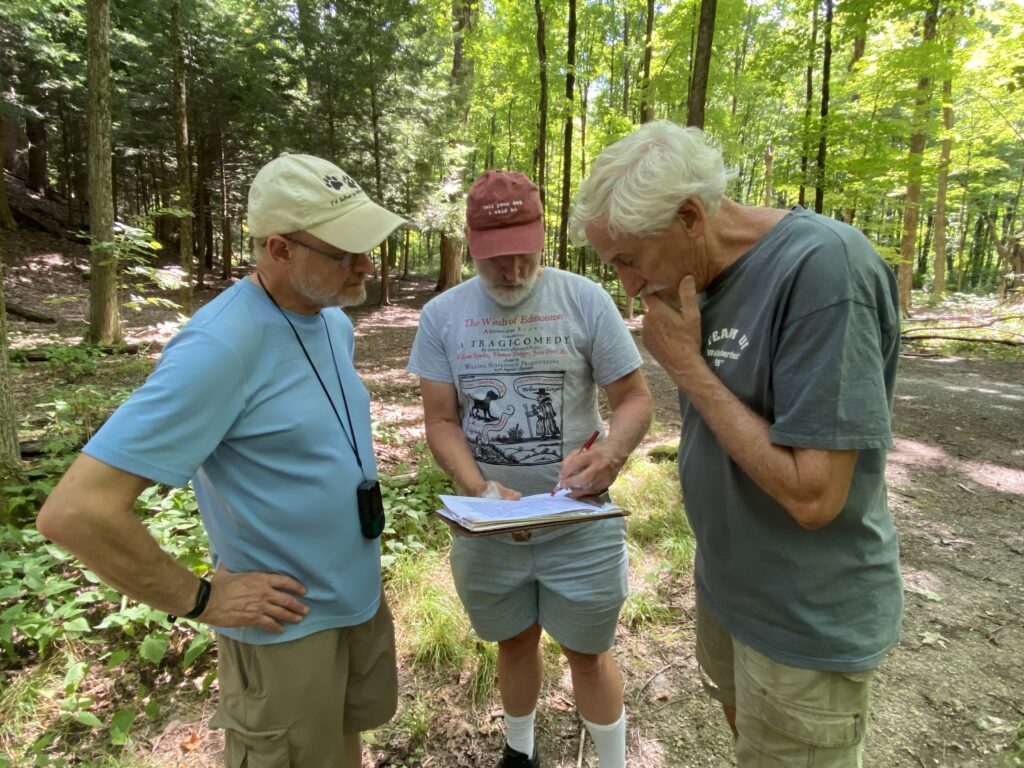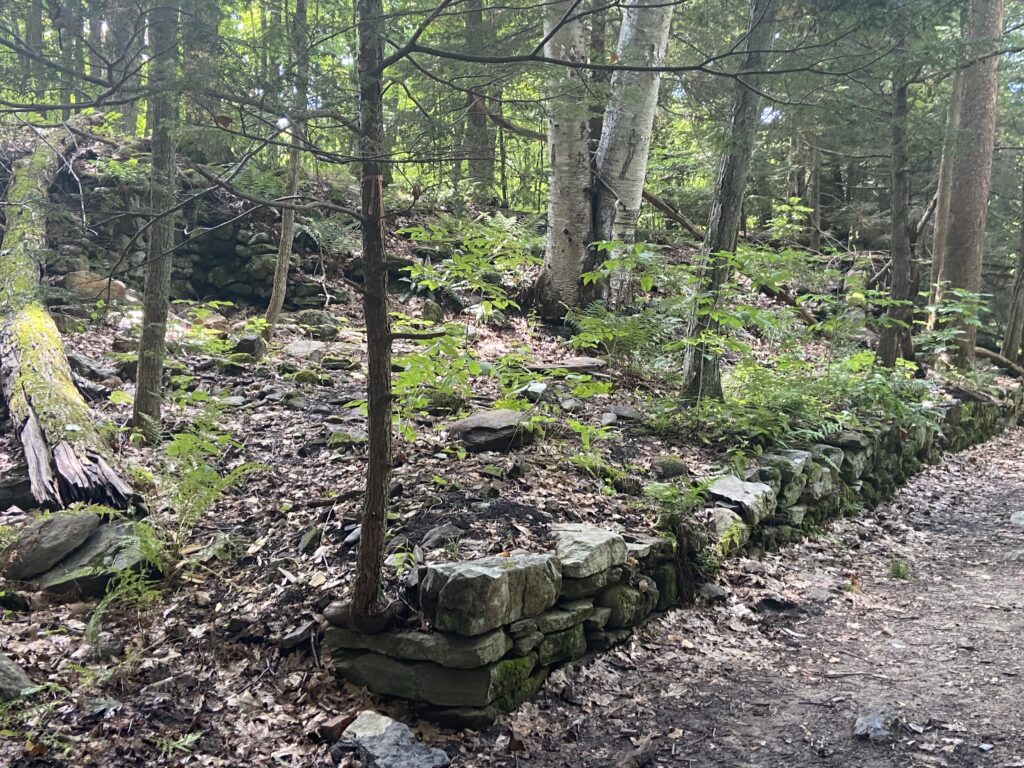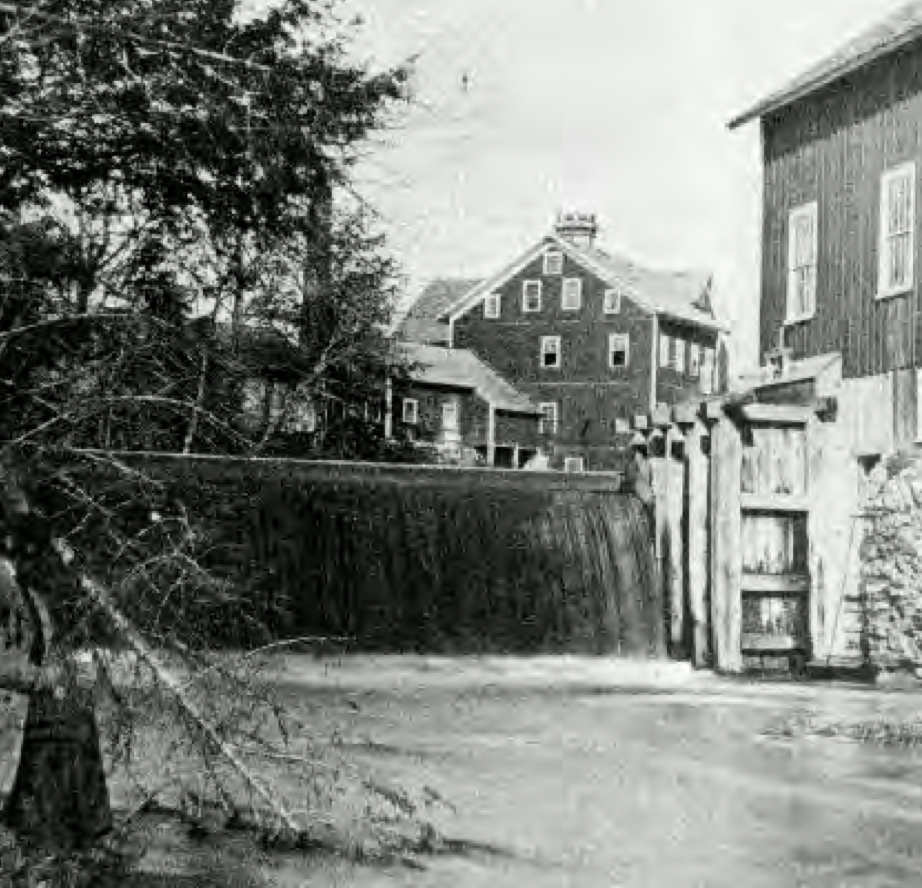Historic Interpretive Walking Trail To Be Established In North Amherst

Eric Johnson (L) is lead archaeologist for the history trail project. With Dave Mix Barrington (center) co-chair of the Mill River History Trail Committee and neighbor Steve King (R). Photo: Meg Gage
The District One Neighborhood Association (DONA) is working on creating a walkable trail highlighting North Amherst’s lesser known history. The walk will start at the newly renovated North Amherst Library and end at Cushman Common. It will include 19 historic sites, such as different mills and historic homes, neighborhoods, and businesses. Each site will be marked with a modest sign, and a link to a QR code to provide historical information.
Access to a historic walk such as this one will make it interesting and easy to learn about North Amherst as it was before most businesses moved to Holyoke and Springfield in order to harness the power of the much larger Connecticut River. We will be able to remember the Cushman Clam Club, the important ice industry at Puffer’s Pond, and the thriving Lithuanian immigrant community that took up all of Summer Street.
While Amherst is a historic town, much of its well-known history is connected to wealthy individuals and institutions downtown, such as the Dickinson family and Amherst College. While that history is interesting and important, we must also do the work as a community to learn about the immigrant and working class communities of North Amherst, who are equally as important and much more often forgotten. Without these mills, farms, and other businesses, Amherst would not have persisted as it has. Like most places, where there is wealth and education there is usually important blue collar and immigrant work that supports it. The trail will not only be walkable and will accessibly tell the story of Amherst’s early economy..
It is through a method called ‘Community Archaeology’ that we will achieve this. “Community Archaeology is a field of archaeology where the community is engaged in doing the research and protecting the site. It’s believed that communities who are aware of their history are more likely to protect those remnants of history,” said Meg Gage, a leader of this project.
According to the website for DONA, archivist Kit Curran and archaeologist Eric Johnson are researching the records for background information and identifying the site locations. In the plans are signage that marks and annotates the ruins and places them in their historical context. The four sites that Johnson and Curran researched are:
1. A canal near the western end of the trail that diverted the river west and then south to the grist mill (now on Montague Rd.). The remains of the canal run along the north side of the park.
2. Roberts Mill #1, just before the Robert Francis Bridge, on right of footpath walking east from Puffers Pond.
3 Roberts Mill #2 just after Robert Francis Bridge, on the left side of footpath walking east.
4. Cushman Clam Club, men’s social club very near Roberts Mill #2.

The project was awarded $12,900 by the Community Preservation Act committee (CPA) last year as funding for the research of the first four sites on the tour. DONA still needs funding for the research of the other 15 sites, website development, and signage for each site. Before DONA can negotiate for additional funding, they must create a clear and affordable plan for the remaining work. DONA will have to negotiate with the town’s Community Preservation Act Committee (CPAC) about additional funding because the entire trail is on public conservation land. This is actually a good thing because no private property will be involved. It truly will belong to the community.

Not only will this project shed light on North Amherst’s lesser known history, but it can hopefully bring more people to the Mill District and North Amherst in general. “We mostly want people to realize how much more nuanced Amherst history is and to be proud of it,” says Gage. Right now you can walk the trail and see many sites, but without the signage it’s hard to interpret what you’re seeing. For example, you can go see Puffer’s Pond but there are no visible remnants of Mr. Puffer’s ice business. That area was once the industrial center of Amherst. The amount of industrial activity along the Mill River earned the area its nickname of Factory Hollow, with Puffer’s Pond known as Factory Hollow Pond. When the project is completed you will be able to read about it on a sign and even scan a QR code and see pictures of the pond from the late 19th century, making history more accessible to all of us.
Those interested in participating in this project can reach out to ContactUs@amherstdona.org.

So impressed by this group and its members’ progress!
What a fantastic project! So interesting. Thanks to all involved!
Thanks to DONA and to all those engaged in this impressive and important project. North Amherst has become a model of private development collaborating with historical preservation and public participation, Now if we could create a Museum with interactive exhibits in the Mill District this model of public-private collaboration could give new meaning to the idea of Village Center. There is still more to be learned, documented and affirmed about its past.
Yaay for historic walks! More, please. (-:
The other really nice thing about this project is that it is being done in-house, and not farmed out to a consultant. That is not to dismiss the expertise and guidance that a good consultant can provide, but in many cases consultants come in knowing little about the “lay of the land,” and have neither the time nor the passion to develop the kind of base knowledge that local projects need. One especially egregious example of this was the 2013 market-rate housing study done by RKG — the infamous “Laptops and Lattes” one. Amherst has an abundance of local knowledge, enthusiasm, and expertise that should be used and appreciated for the wonderful resource that it is.
And even nicer if Stephen Puffer jr. could join us (virtually?) on the walk!
Two thumbs up to all involved.
Very cool addition to our local history landscape.
The extensive report, produced by Eric Johnson and Kit Curran using the CPA grant, is now available on the DONA website as https://amherstdona.org/archaeology-walk/.
Rob, we certainly plan to involve the life and career of Stephen Puffer.
Thanks for all the support above!
It has been an honor to be a part of this work. And it is great that the report is now available. Thanks, David.
Can DONA print up copies of the two volumes in one? I would love to have my own copy to add to my Amherst history library and to hold in my hands while I digest its contents.
I think it would be a terrific fund-raiser for this project and others perhaps for the beautification of the “improved” environment of North Amherst.
I appreciate this great article and the enthusiasm for the project reflected in the comments. One small correction: because the trail is almost entirely on conservation land, we will collaborate and negotiate the details of the plan with the Conservation Department, not the Community Preservation Act Committee (CPA). We are grateful to the CPA for initial funding!
Eric and Kit’s report is fascinating and adds greatly to our knowledge of North Amherst’s past. One interesting tidbit: the last picture in this article is of the Red Mill, which was decommissioned in the 1920’s. Clifton Ashley, local blacksmith and lover of partying, took lumber from the Red Mill to build the Cushman Clam Club, where men could find Clifton cooking clams and pouring beer. A precursor to North Amherst’s student partiers? Perhaps, but it is certainly a glimpse into the everyday life of the part of town north of the University.